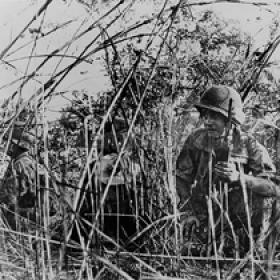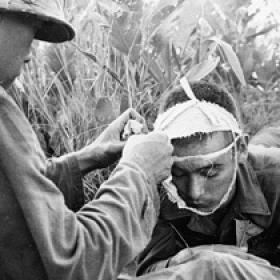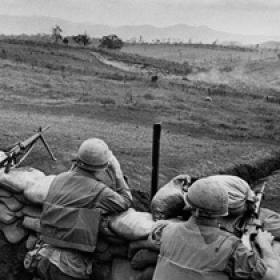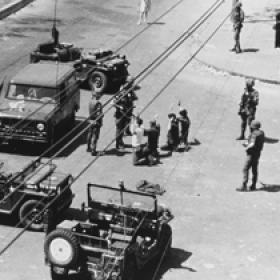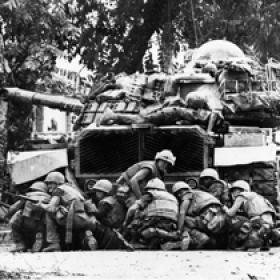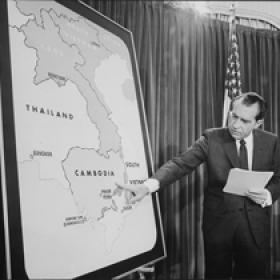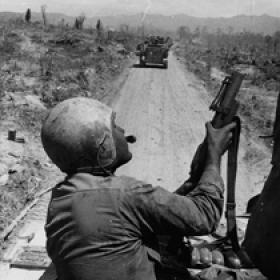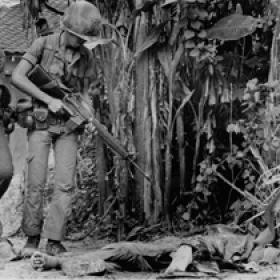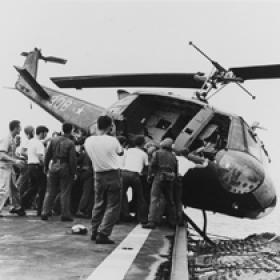Battle of Dien Bien Phu
March 13 - May 7, 1954 – While fought years before American troops would be involved in Vietnam in any significant way, the Battle of Dien Bien Phu would have a profound effect on American involvement in Vietnam. French Union forces had been engaging Viet Minh forces for nearly a decade when General Henri Navarre took command of the Indochina War in May 1953. Navarre began preparing a strategy whereby the French would establish a fortified airfield near the village of Điện Biên Phủ along the Laotian border, with the hope of impeding Viet Ming supply routes and luring the communist forces into attacking the well-defended French position. In November 1953, the French moved to occupy the valley and begin fortifying their position, while the Viet Minh forces under Võ Nguyên Giáp methodically built up their strength as well. The French occupied the valley area, while Giáp built his strength in the hills around them. Slowly but surely, he amassed huge quantities of supplies and weaponry, including heavy artillery and anti-aircraft weapons. Many artillery pieces were secretly dragged up the hills surrounding the base, until they could fire down from concealed positions on to the French. While the French amassed around 15,000 troops at Dien Bien Phu, they were outnumbered by nearly 50,000 Viet Minh who had encircled the base. On March 13, a massive bombardment signaled the start of the attack. The French were unable to maintain counter-battery fire on the Viet Minh positions, and the airfield was quickly rendered unusable. Air resupply was impeded by the powerful air defenses the Viet Minh had amassed, and the French were whittled away within their fortress. American officials considered intervening, but the Eisenhower Administration opted against involvement. On May 7, the base finally surrendered, just as negotiations began in Geneva on the fate of French Indochina. Dien Bien Phu would loom large for the rest of the war, especially during the Battle of Khe Sanh.
